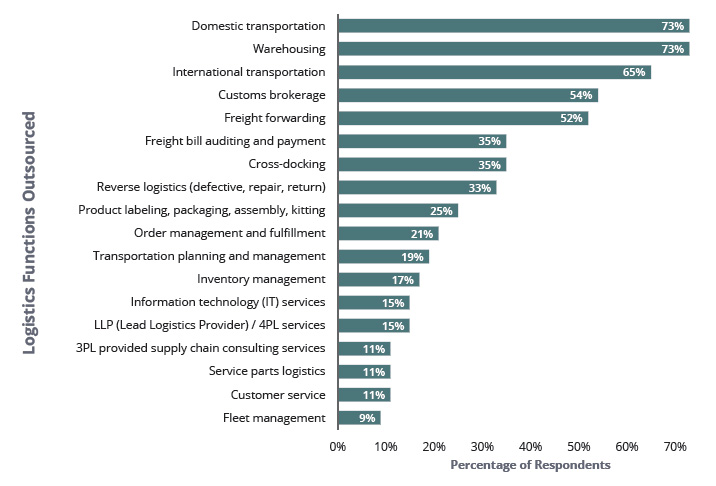 The 2020 24th Annual Third-Party Logistics Study, which was released last week at the Council of Supply Chain Management Professionals (CSCMP) Edge Conference in Anaheim, Calif. by Infosys Consulting, Penn State University, and Penske Logistics. Dr. C. John Langley initiated this study in the mid-nineties as to capture the evolution of the third-party logistics providers as they worked to transition from vendors of individual services to logistics partners offering integrated services and building meaningful, collaborative relationships with their customers.
The 2020 24th Annual Third-Party Logistics Study, which was released last week at the Council of Supply Chain Management Professionals (CSCMP) Edge Conference in Anaheim, Calif. by Infosys Consulting, Penn State University, and Penske Logistics. Dr. C. John Langley initiated this study in the mid-nineties as to capture the evolution of the third-party logistics providers as they worked to transition from vendors of individual services to logistics partners offering integrated services and building meaningful, collaborative relationships with their customers.
Today, the capabilities of both shippers and 3PLs have improved significantly. The Annual 3PL Study has grown as well, becoming a widely anticipated, heavily referenced index on the state of the 3PL industry. In addition to expanding to become a year-round process, the study’s evolution includes steadily expanding global reach, increased accessibility, expansion to include perspectives from both shippers and 3PLs, and the addition of supporting sponsors. The study now includes four streams of research: surveys, desk research, focus interviews and intensive, one-day facilitated shipper workshops. Each year the study examines special topics more closely.
Key trends in the 2020 study include:
 Total logistics expenditures as a percentage of sales revenues are a reported 11% in the current year, which is equal to the results reported in the previous two years’ studies.
Total logistics expenditures as a percentage of sales revenues are a reported 11% in the current year, which is equal to the results reported in the previous two years’ studies.- The percentage of transportation spend managed by third parties was 55%, and the percentage of warehouse operations spend managed by third parties was 43%.
- Shippers outsource a wide range of logistics services (see chart), with the most prevalent being domestic transportation (73%), warehousing (73%), international transportation (65%), customs brokerage (54%) and freight forwarding (52%).
- Current study results document the percentages of shippers outsourcing the following activities: order management and fulfillment (21%), information technology services (15%), LLP (lead logistics provider)/4PL services (15%) and customer service (11%).
- Recent history suggests that the use of analytics—the scientific process of transforming data into insight for making better decisions—is gaining significantly in terms of frequency of use, levels of sophistication and utilization of available computational capabilities.
The study also identified some key challenges facing shippers and 3PLs in today’s business world:
- Growth of e-commerce. Closely related to the “Amazon effect,” the introduction and expansion of multi-channels for distribution has been a game-changing factor in the planning and operations of many supply chains.
- Economic uncertainty. Domestic and global economic changes have resulted in heavy pressure on supply chains to adapt to new economic circumstances.
- Driver availability. Of great concern, but not unique to the U.S., is the lack of trained and capable truck drivers.
- Disruptive technologies. Some of the disruptive technologies impacting supply chains include use of drones, autonomous vehicles, cloud-based capabilities, artificial intelligence (AI), internet-of-things (IOT), etc.
- Relationship necessities. Examples include: effective collaboration of people, processes and technologies in shipper-3PL relationships; structured approaches to achieving alignment between these organizations; effective use of techniques such as gain-sharing; and the development of joint strategies that can be of value to both parties and also to the overall supply chain.
- Competitive challenges. In addition to the factors included above, shipper and 3PL organizations recognize the need to deal with new entrants into their lines of business.
You can visit www.3plstudy.com to download and read the complete report. Need help with your own logistics challenges? Logistics Plus is always here to help.

